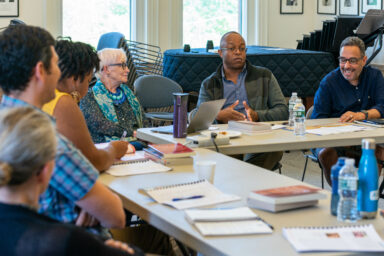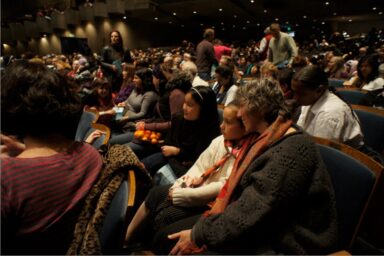What a landmark grant program taught us about interdisciplinarity, learning, and the evolving role of presenters
In the late 2000s and early 2010s, the Association of Performing Arts Presenters (with support from the Doris Duke Charitable Foundation) invested $3.5M across two rounds of Creative Campus Innovations grants. Fourteen campus presenters received $100–$200K to do something deceptively simple and quietly radical: move the arts from the margins to the center of academic life.
WolfBrown’s Alan Brown and Steven J. Tepper distilled what worked, what didn’t, and why this work matters far beyond higher education. Here were the big takeaways—useful to campus presenters, independent arts organizations, artists, and civic partners alike.
Practical strategies that worked
- Start where energy already exists. Partner with faculty and units predisposed to cross-disciplinary work (e.g., environmental studies, public health, media/communication).
- Offer low-friction entry points. Bring arts-integrated modules into existing courses (“residency as a service”), giving faculty easy pilots rather than new course builds.
- Value the long game. Budget for time: multiple residencies, research phases, and iterative showings.
- Codify learning. When you discover misalignments, write shared guidelines, calendars, and credit models so the next project starts further ahead.
- Curate for fit, not just fame. Choose artists whose practice aligns with inquiry, community process, and time-on-campus—not only box office.
The presenter’s evolving role
Creative Campus reframes presenters as:
- Curators of questions (not just shows),
- Brokers and system-builders across departments and communities, and
- Stewards of process who make time, space, and social permission for experimentation.
That’s as true for independent arts centers as it is on campus.
Bottom line
Placing the arts at the heart of a creative campus isn’t “extra.” It’s a pragmatic strategy for institutions—and communities—facing complex challenges. The arts expand how people inquire, connect, and learn. When presenters lean into collaboration, process, and purpose-built partnerships, they don’t just fill a calendar. They change how a campus, and a city, thinks and works together.
Download the white paper “Placing the Arts at the Heart of the Creative Campus.”
Download an article in APAP’s magazine to read more related to our research.



